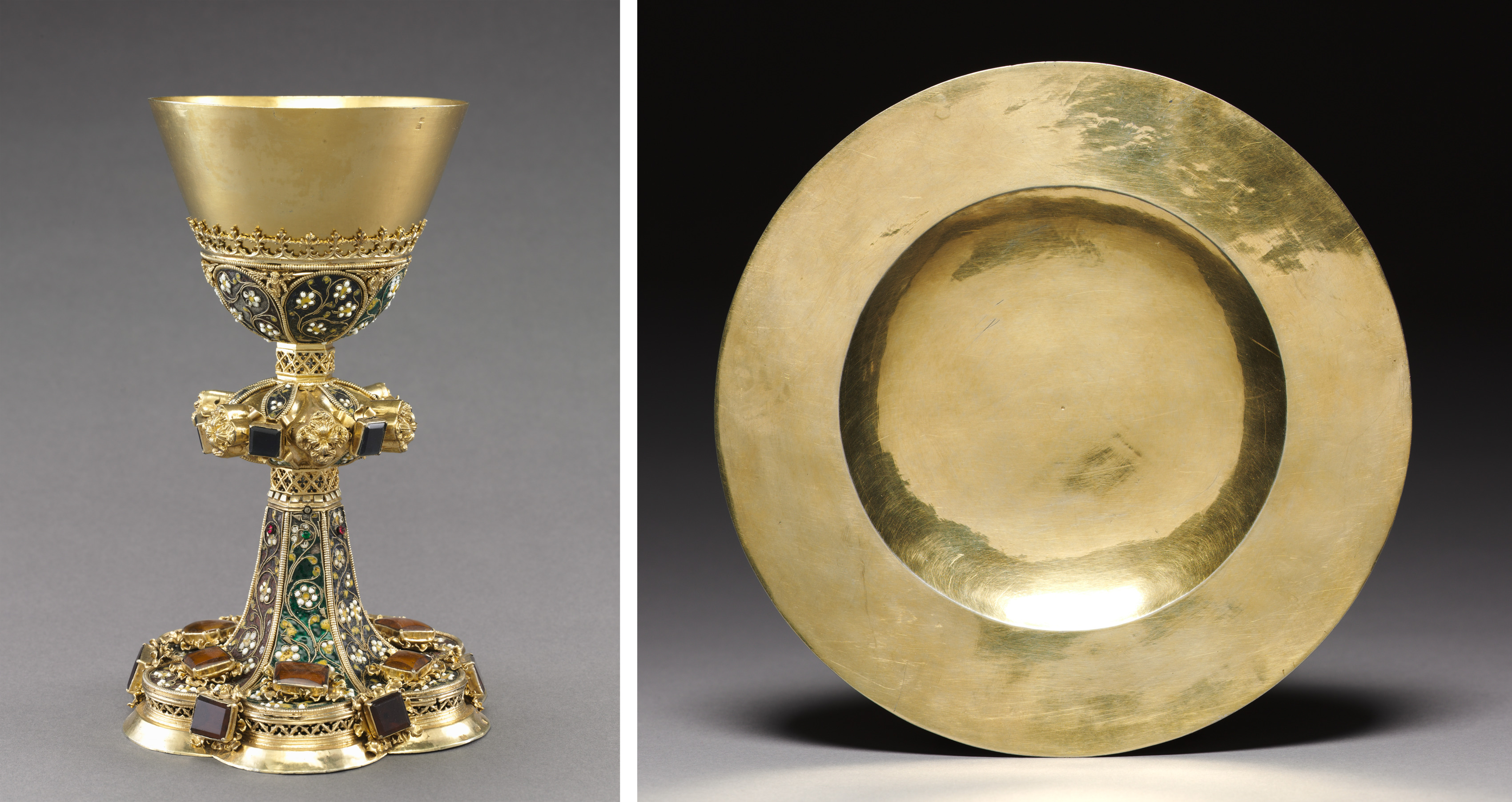The Cleveland Museum of Art
Collection Online as of May 6, 2024

Chalice and Paten
c. 1450–1480
Overall: 24.6 cm (9 11/16 in.)
John L. Severance Fund 1990.3
Location: 111 German and Austrian Gothic
Description
The chalice and paten—the most important liturgical vessels—are used at the altar by the priest for the consecration of the Eucharistic bread and wine during the celebration of the mass. This chalice survives with its original paten. The form of the chalice evolved over the centuries. Gothic chalices, like this one, gradually developed angular or faceted knops, generally hexagonal, with lobed feet. This sublime example is decorated with filigree enamel consisting of twisted gold wire forming a floral design, which in turn is filled with colorful glass pastes. Gemstones add to the embellishment.- (Gertrude Rudigier, Munich, Germany).
- Eikelmann, Renate. "Notable Acquisitions." The Bulletin of the Cleveland Museum of Art 78, no. 3 (1991): 63-147. Reproduced and Mentioned: p. 74 www.jstor.org
- All That Glitters: Great Silver Vessels in Cleveland's Collection. The Cleveland Museum of Art, Cleveland, OH (organizer) (November 23, 1994-January 8, 1995).Notable Acquisitions. The Cleveland Museum of Art, Cleveland, OH (organizer) (June 7-September 15, 1991).
- {{cite web|title=Chalice and Paten|url=false|author=|year=c. 1450–1480|access-date=06 May 2024|publisher=Cleveland Museum of Art}}
Source URL:
https://www.clevelandart.org/art/1990.3